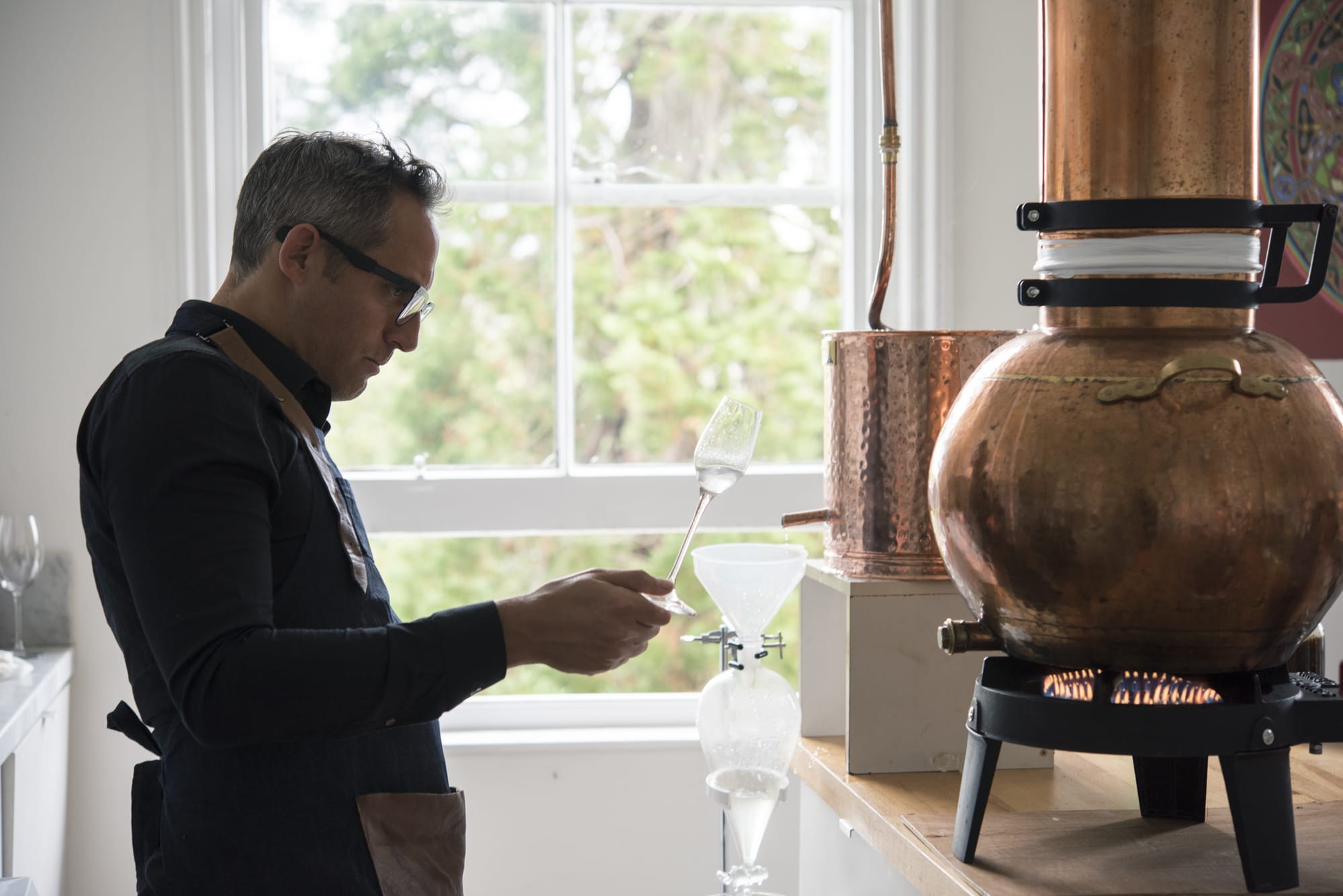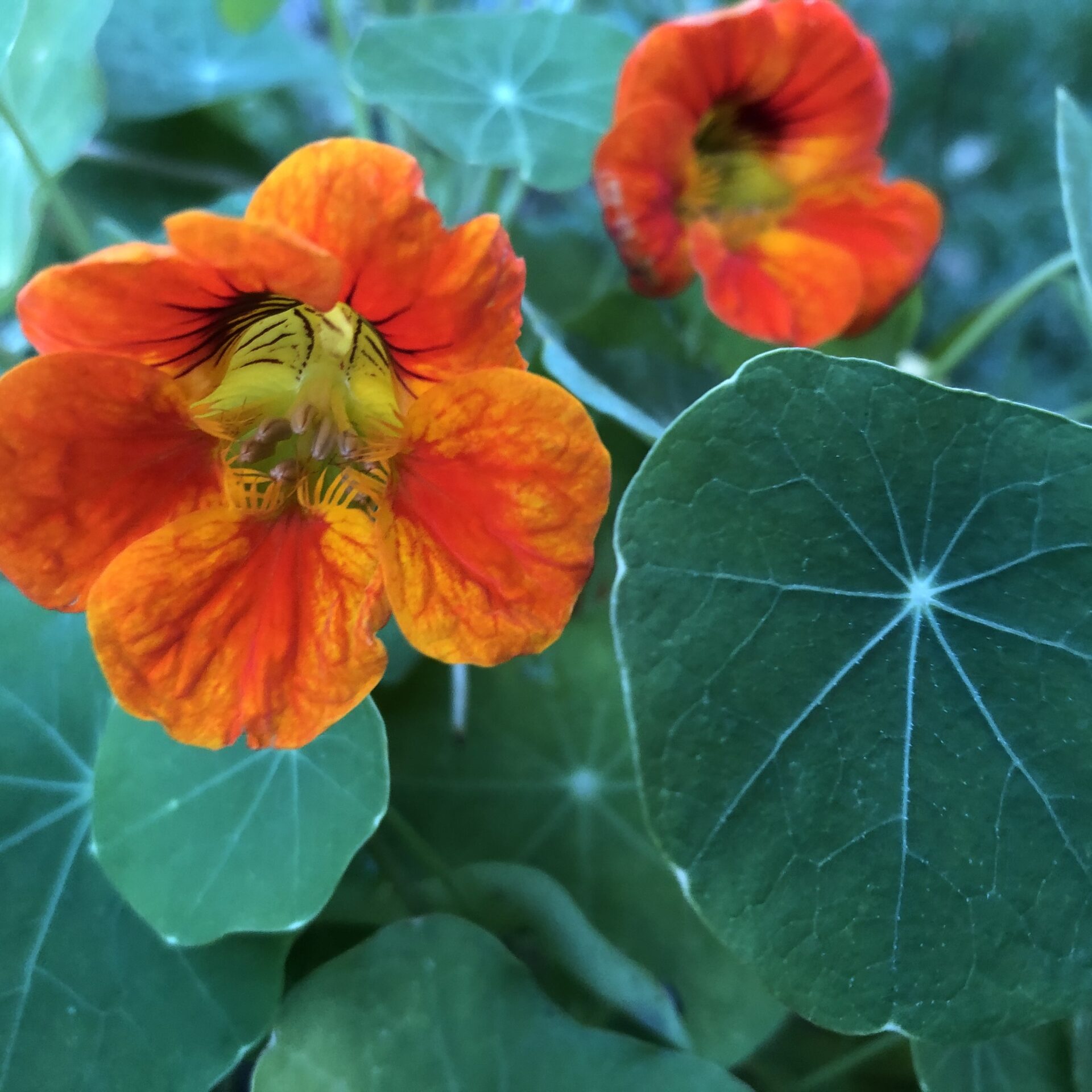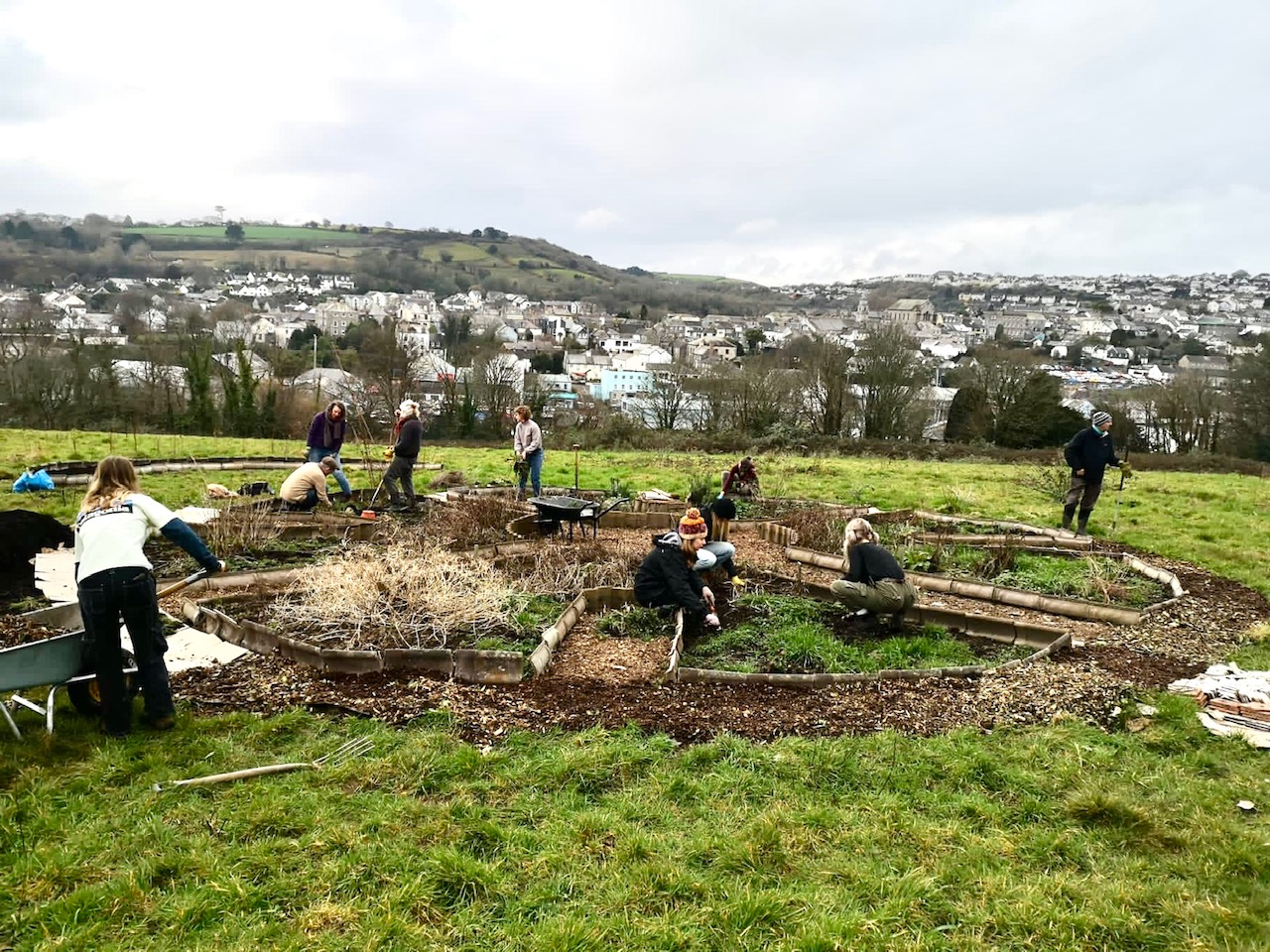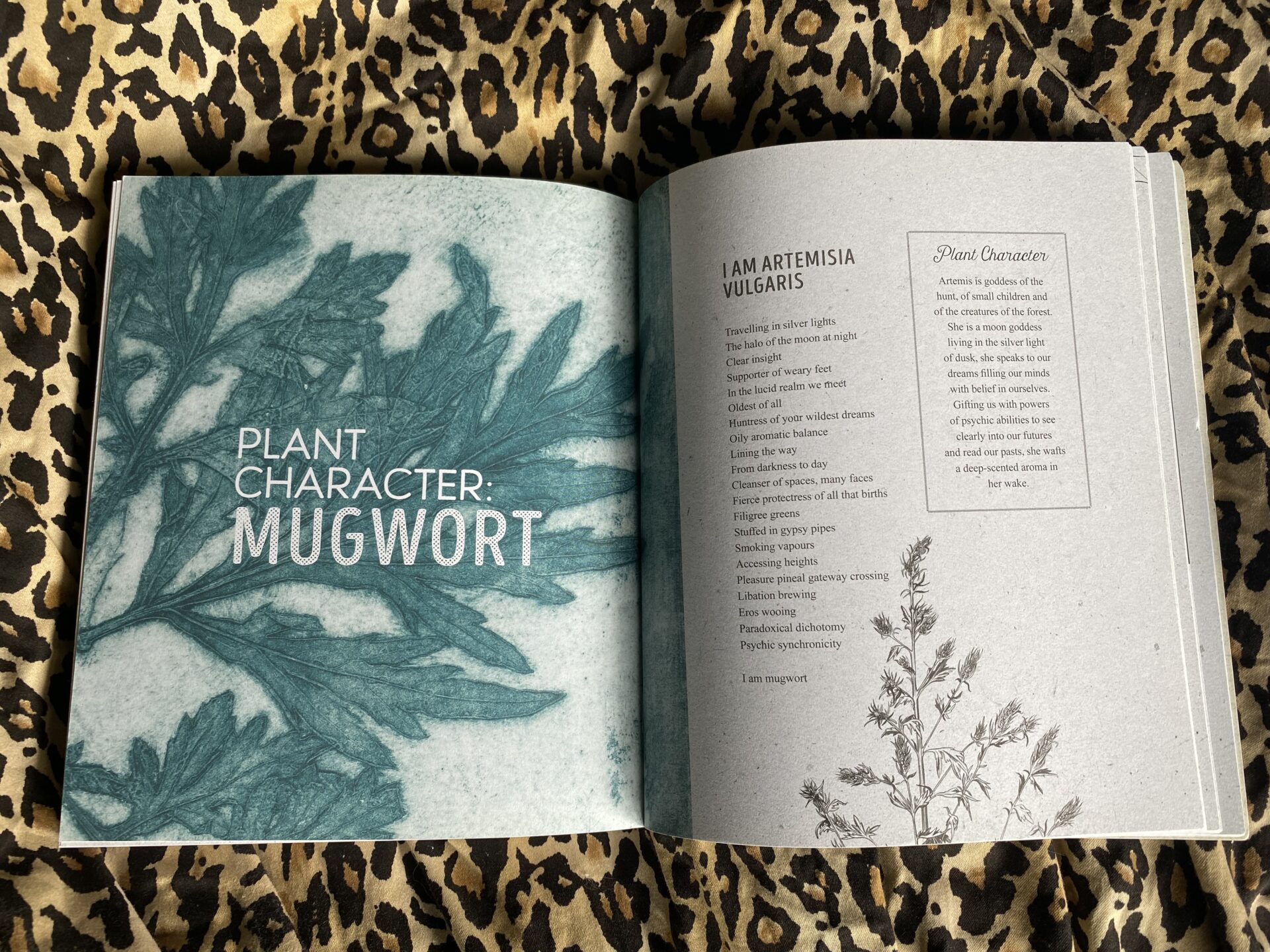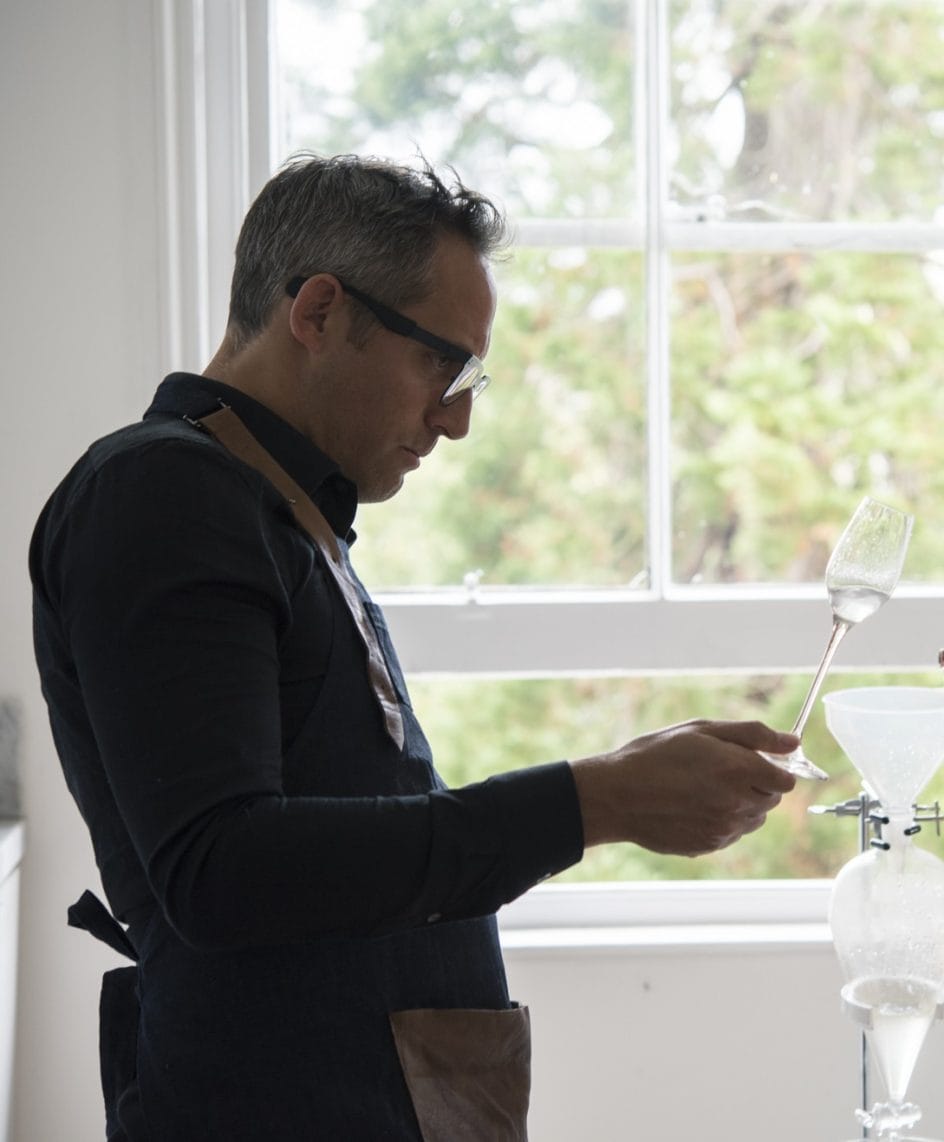
Michael Isted is a trained phytotherapist (BSc Hons), aromatherapist and nutritionist who started up his company The Herball in 2013. Michael set up The Herball as a portal to promote and celebrate the many ways in which we can integrate plants and plant preparations to invigorate and enrich our lives. Michael distils in traditional copper and extracts plants with C02, he also works closely with a number of small independent organic growers and plant workers in the UK, Europe & India to source, produce and sell authentic, artisanal plant-based products, such as infusions, hydrosols, spices, extracts, and oils.
Michael frequently runs workshops across the globe teaching plant therapeutics while also consulting, creating and formulating botanical drinks for brands, cafes, bars, restaurants and spas. He is also currently in the process of launching new Herball concepts across Europe, North America and the Middle East.
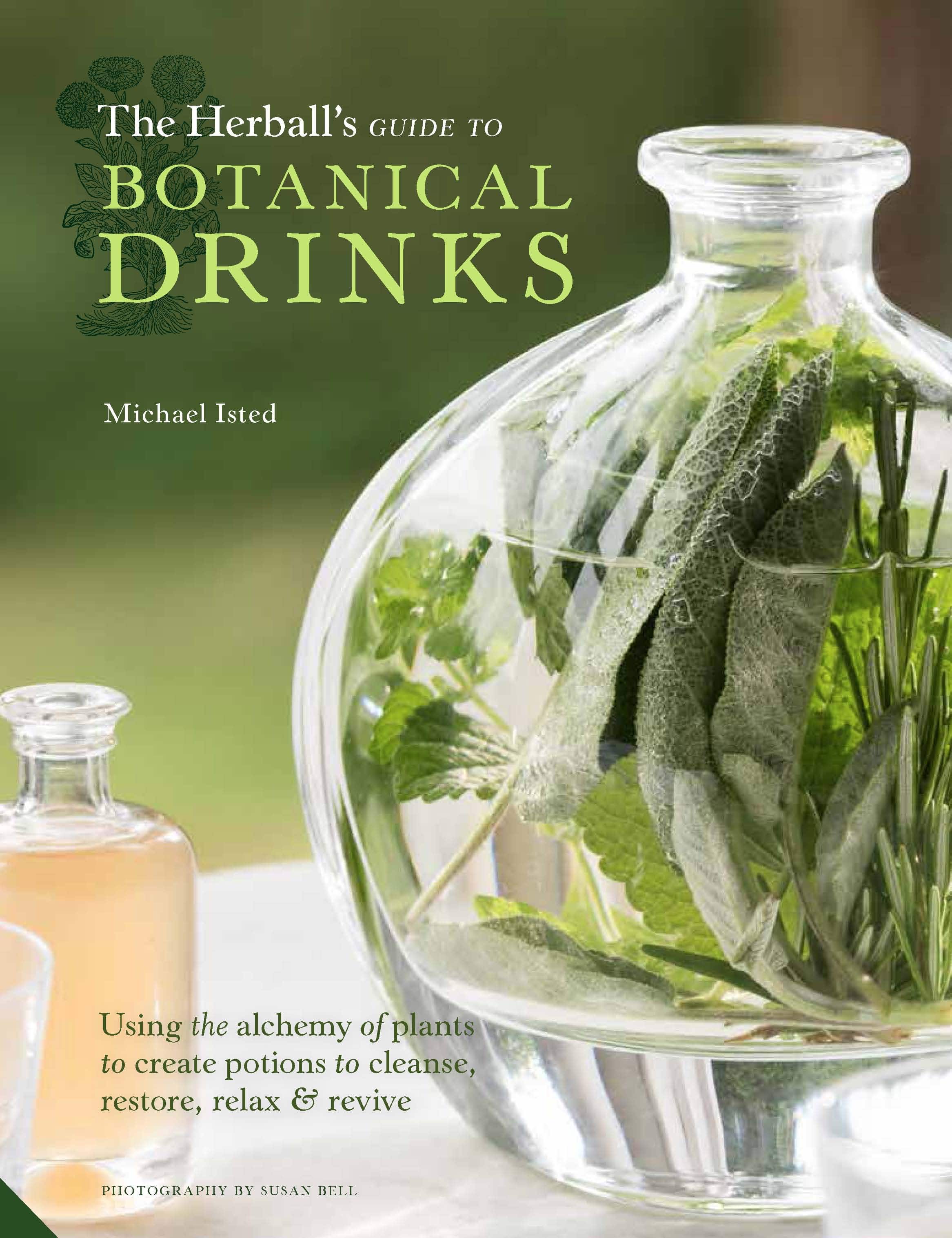
Michael has also just written and published ‘The Herball’s Guide to Botanical Drinks a book which reflects a very modern take on an ancient practice, revealing the history and processes of making botanical drinks with herbs & plant extracts.
As a herbalist I am obsessed with prophylactic delicious medicines and creating preventative rituals that my clients, friends and guests can integrate into their lives. With a passion for creating engaging and contemporary plant portals which my clients can step through to interact with nature on a whole new level. My work in food and beverage allows me to create novel ways to connect people with nature, I really want my patients and clients to enjoy the plants and medicines that they are taking, I want to move away from and try not to work with non-descript brown liquids in brown bottles that are so often prescribed by herbalists. It is our duty as herbalists, aromatherapists, nutritionists, naturopaths or plant workers to engage people with nature, it’s such a vital part of the therapeutic exchange.
I’m often researching ancient recipes & texts for inspiration, during past research into the roots of alchemy and plant medicines through the texts of ancient Egypt, India, Persia, China, Greece and Alexandria I first came across a semi-mythical plant preparation called the Mithridatium. Whilst trying to trace the roots of the Mithridatium I found myself treading in very similar alchemical footprints, it followed a very similar path, from ancient Egypt into Alexandria, Arabia and into Europe also inspired by the ancient healing arts of Asia and India. I’m not sure if there is a more influential therapeutic plant preparation than the Mithridatium, it is arguably the first polypharmic drug of sorts, the precursor to numerous other drugs and even confectionary.
The semi-mythical Mithridatium which has also been called a ‘pharmacological ghost’ (Totelin, 2004) was used as an anti-dote or anti-venom and as a cure for all with numerous stories and recipes its influence spread across millennia, people, places and cultures. Here I will shed as much light on the Mithridatium as I am able to and discuss its continued influence.
Mithridates VI, King of Pontus (135 BC), is an extremely influential figure in the roots of therapeutic plant preparations, one of the first experimental toxicologists and ethnobotanists of our time (Griffin, 1995). Mithridates was obsessed with poisons and antidotes, his father was poisoned by his mother, so he lived in fear that he himself would also be poisoned.
Inspired by the bountiful nature of the Black Sea region and the previous work of King Attalus III of Pergamon (170 BC) himself an expert in cultivating and preparing concoctions and antidotes with local toxic flora Mithridates fascination with toxicology grew. Mithridates looked further afield amassing a huge library of ethnobotanical texts and treatises from around the world. Drawing inspiration from the ancient Ayurvedic texts, the long life Hindu practitioners and the antidote recipe of Sushruta (ca. 550 BC) which boasted 85 different ingredients or the Mahagandhahasti theriac of Charaka (300 BC), which contained 50. It is believed that Mithridates was also inspired by the alchemical writings of Democritus of Egypt who was influenced by King Menes (3000 BC) previous work on poisons and cultivating medicinal plants (Mayor, 2010).
Mithridates teamed up with a brilliant botanist, physician and skilled pharmacologist called Krataeus. They forged a strong bond and became an early dream team of phytotherapy crafting and studying mixtures of plants, resins and extracts to create exceptionally powerful potions as anti-dotes to all poisons. They observed the bees working on the nectar of poisonous plants such as rhododendrons and watched ducks thriving on hellebore and wondered how these creatures were so immune to these poisons.
Mithridates & Krataeus started to experiment with micro-doses of poisons, ingesting (or getting royal tasters to ingest) plants such as Atropa belladonna, Conium maculatum, Hyoscyamus niger and Aconitum napellus. They even ingested vipers’ flesh and beaver secretions from the testicals of the beaver, called castoreum it was a prized remedy for treating fevers, boosting immunity and as an aphrodisiac (Mayor, 2010).
Mithridates and Krataeus discovered that by ingesting small amounts of poisons that they would be immune to larger more fatal doses of the same chemicals. They would then go on to compound some of the most effective herbs, resins & extracts to try to produce a prophylactic universal cure for all. The key being to combine combinations of beneficial plant secondary metabolites with anti-toxins and small amounts of poisons. Mithridates’ and Krataeus’ cure for all was named the ‘mithridatium’, a combination of over 70 ingredients, herbs, resins sourced locally and from around the world.
Although it is impossible to find the original Mithridatium recipe research suggests that it included some of the plants from the traditional Egyptian kyphi incense mixtures including cassia, cinnamon, myrrh and oil of balanos (from the Balanites aegyptiaca tree, native to North Africa) combined with ingredients, such as honey, castor, musk, frankincense, rue, tannin, garlic, red earth of Lemnos, fermented grape, charcoal, curdled milk, centaury, birthwort, ginger, iris, orris root, rue, eupatorium, rhubarb, hypericum, saffron, walnuts, figs, parsley, acacia, carrot, cardamom, anise, opium, and other ingredients from North & East Africa, India, Arabia Asia, Mediterranean and Black Sea (Mayor, 2010; Totelin, 2004; Watson, 1966).
The mithridatium was developed further over the years by Andromachos (50 A.D), physician to Emperor Nero, he created a version named the ‘Galene’ or ‘Galeni Theriaca’. ‘Galene’ meaning tranquillity as it appears that Andromachos significantly increased the amount of opium in the preparation. The Galene was used for a wider variety of ailments including respiratory problems such as asthma, circulatory disorders such as dropsy and as a general anti-inflammatory and health tonic (Karaberopoulus et al, 2012).
Research suggests that the Galene contained around 55 herbs and up to 70 other ingredients, using a base of honey, wine, vipers’ flesh, lots of opium, cinnamon, opobalsam, hedychium, long pepper, black pepper, myrrh, turpentine resin, lemnian earth, roasted copper, bitumen and excretions of beaver (Griffin, 2004; Mayor, 2010; Watson, 1966). It took 40 hours to prepare and was matured for the optimum potency for 12 years before administering orally directly or with water or wine, it could also be applied topically (Griffin, 2004).
Contrary to belief, the term Galene was not associated with famous Greek physician Galen of Pergamum, 131–200 AD, however Galen did further develop the Mithridatium, creating the Theriac 64, a drug containing 64 different herb preparations, based on the mithridatium. The term theriac is said to have come from the Greek word theria / theriakos meaning ‘wild beasts’ as it too was used as an antidote for venomous bites (Griffin, 2004).
Galen also improved the taste of the Mithridatium by including more honey and wine, this would form the precursor to the ‘electuarium’ or ‘electuary’. An electuary was a Greek medicine traditionally made with honey in combination with herbs & extracts to create a delivery method of dispensing therapeutic quantities of plant secondary metabolites for consumption (some of the first herbal confectionary). The term electuary comes from the Greek word ekleikton, meaning ‘to be licked’ electuariums or electuarys used to form the largest group of therapeutic pharmaceutical antidotes (Wexler, 2014).
Versions of the theriac appeared in Islamic toxicology manuscripts, the Arabic theriac (tiryaq-i-faruq, mithruditus) and Persian (daryaq) recipes inspired by Mithridates’ concept of combining poisons with antidotes (Mayor, 2010; Wexler, 2014). The great Arabian physicians such as Avicenna (980 A.D.) were starting to introduce sugar cane and plant distillates into similar preparations, with the introduction of sugar we are beginning to see the origins of preparations such as syrups, conserves, sherbets and confectionary (Mann, 1987).
Uses of the theriac were recorded in the Leechbook of Bald, where King Alfred the Great was sent a variant of the theriac by Abel the Patriach of Jerusalem and its use was also recorded via Arabian influences in the Greek and Roman medical writings at the University at Salerno (Griffin, 2004; Watson, 1966). Later in the 12th century a commercialised 55 component version of the theriac was being manufactured in Venice and exported around the world, in the UK this became known as ‘Venetian Treacle’ (Griffin, 2004; Watson, 1966).
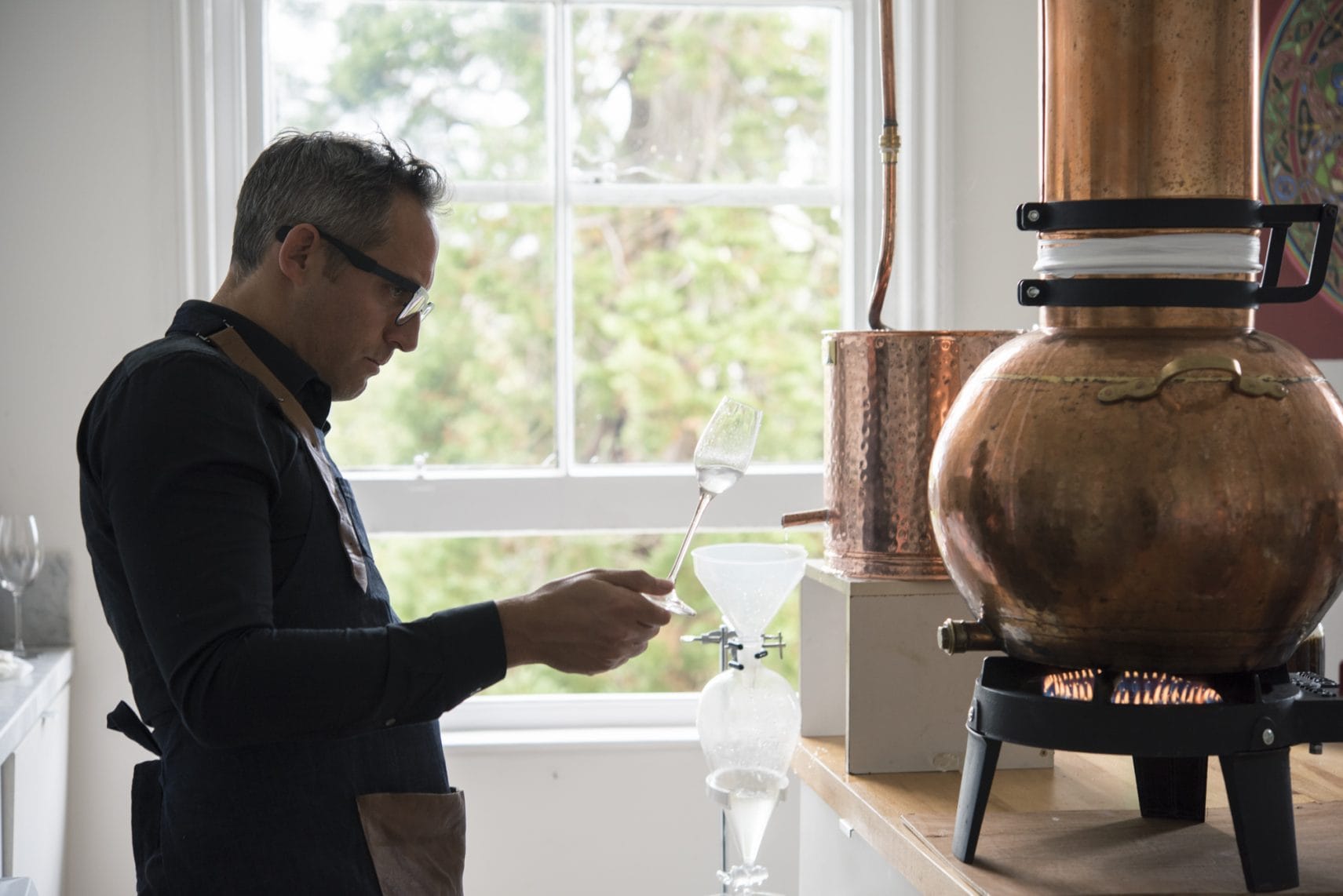
The London Pharmacopoeia in December 1618 detailed formulations for a theriac and a Mithridatium and during the Great Plague of London it was recommended that people ingest variations of the Mithridatium and Galene. It was not until the efficacy of these preparations was really brought into question in 1746 that the Mithridatium and its variants disappeared from the public domain, although versions of the Galene still appeared across Europe late in the 1800’s (Griffin, 2004).
So, what about the efficacy of these preparations? How could it have been a cure for so many ailments? How were these drugs popular for so long? If you look at the recorded recipes they contain many health giving, anti-inflammatory, anti-bacterial , peripheral circulatory stimulating, bio-availability enhancing plants, resins & extracts, many of which are still used regularly today but what cannot be ignored is the high content of opium, anything with such a high content of opioids would feel not only effective but also very addictive.
One cannot underestimate the powerful nature of consuming complex prophylactic mixtures of herbs through diet or by creating and ingesting herbal remedies or potions. The commercialisation of the Mithridatium & Theriac to the ‘Venetian Treacle’ I’m certain was the beginning of the end for these preparations. As the popularity and influence of the Mithridatum and Theriac grew it became adulterated with simplified ingredients it would have lost its potency and its true identity.
The golden question often asked about herbs is, what do they do? However, it is not what the plants do as such but how our bodies or the complex biological processes of the body interact with the raft of plant secondary metabolites in the plants or plant preparations. This exchange is a complex dynamic interaction, that will change from person to person, plant to plant and preparation to preparation. With past experience, scientific research and historical data there is a reasonable amount of information on what interactions and biological effects may take place, but it is by no means conclusive, almost all research papers on the efficacy of herbs conclude with ‘this study suggests that such and such plant / extract may be of help for such and such disorders, but more clinical studies required’. As much as I admire and work with scientific research, nature just does not always conform to the very limited, narrow spectrum and linear logic of science, it’s much more complex than this. Science also does not take into account the spirit and energy of the plant or plant material, you can run as many double blind, randomized controlled trials as you like but you’ll never truly understand the healing capacity of plants or fungi.
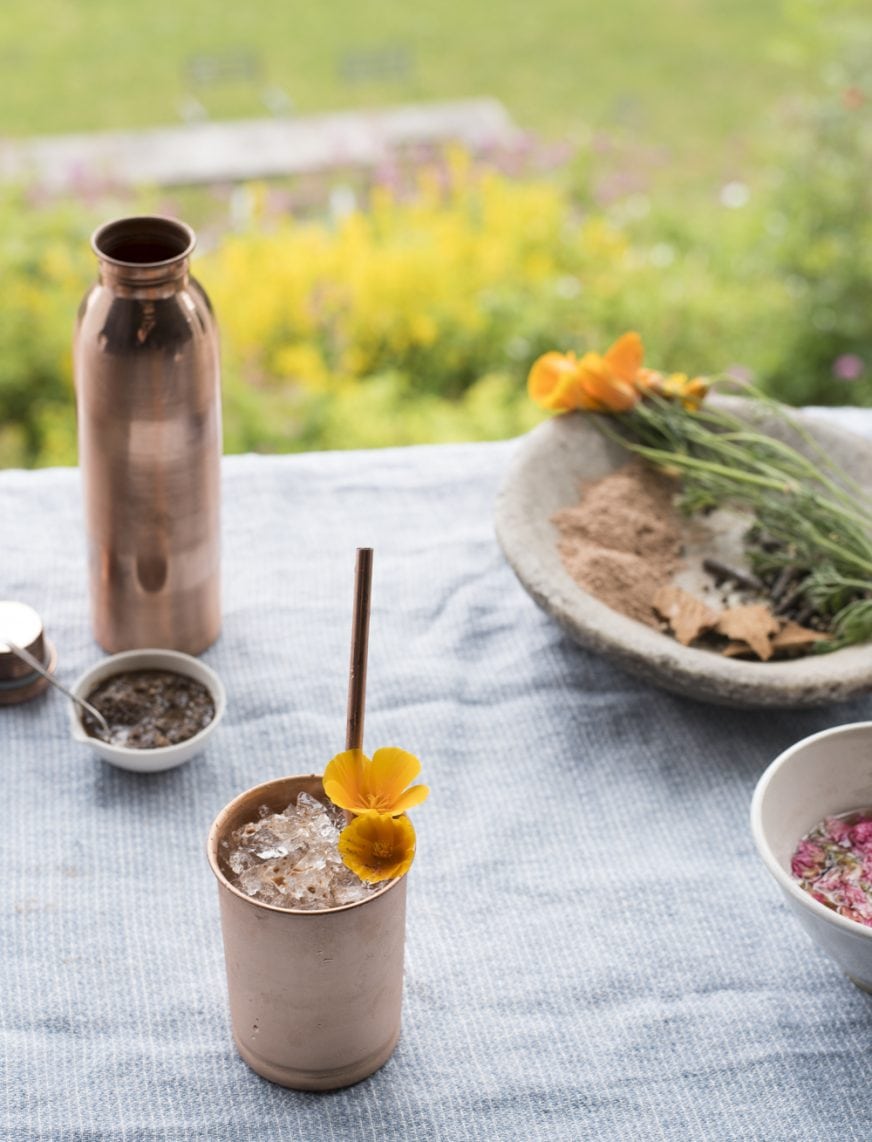
These ancient preparations and their complex nature are deeply inspiring although it is impossible to reconstruct the original recipe of the Mithridatium (I’m also not into the idea of beaver secretions either) from existing documentation, we cannot doubt their influence, they has certainly directly and indirectly influenced a variety of preparations and drugs. I like to work with complex mixtures of plant constituents to craft delicious (where possible) prophylactic medicines, I feel it is key to wellness and also a great way to interact and connect with the nature that surrounds you. Like Mithridates and Krataeuas, I look to the nature that surrounds me for inspiration, I also use combinations of herbs and spices from all around the world, Southern Indian spices, North & East African resins, American herbs, Chinese mushrooms and herbs closer to home to create these medicines and potions.
Below is a version of the Galene, designed to use prophylactically as a delicious drinking medicine.
GALENE ‘Tranquillity’ 1.0
Long pepper Piper longum
Californian Poppy Eschscholzia californica
Cinnamon Cinnamomum zeylanicum
Peru Balsam Myroxylon balsamum
Myrrh Commiphora myrrha
Black pepper Piper nigrum
White pepper Piper nigrum
Ginger Zingiber officinalis
Rose Rosa spp
Lemon Citrus limon
Copper Cuprum
Medicinal red clay
Sugar
Honey
Distilled water
RECIPE FOR SERVE
50ml Rose Sherbet*
10ml Lemnian Earth & Copper Compound*
100ml Copper infused water*
METHOD
In the bottom of a copper cup add all the ingredients, ¾ fill the cup with crushed ice and churn the ingredients through the ice. Top with more crushed ice, stir and serve with a copper straw, freshly picked flowers and a dust of fine red clay.
LEMNIAN EARTH & COPPER COMPOUND all dried herbs
5g Long pepper
5g Red clay
10g Californian Poppy
10g Cinnamon bark (zeylanicum)
5g Myrrh
7g Black pepper corns
5g White pepper corns
10g Ginger powder
300g Raw honey
120ml Distilled water (hot)
METHOD
Add all to a blender, blend for 30 seconds, decant into copper flask and shake, leave flask to infuse for several weeks, if you are impatient, you can use after two weeks but try to leave for longer at least 1 month preferably 6 months. Warm copper flask and strain off the liquid through muslin or super bag, making sure to squeeze out of much as the liquid as possible, you may wish to use a tincture press, bottle and seal.
ROSE SHERBET
2x Un-waxed lemons
Handful Fresh or dried rose petals
3oz Cane sugar
Peel the lemons, then put the zests in a container with the rose petals, rose water and sugar. Muddle/press the zest, petals, flowers and sugar together for a minute or so, then juice the left over lemons and stir the juice into the mixture. Seal and leave to infuse overnight, or for at least 6 hours. Stir, strain and bottle. This will keep refrigerated for at least 1 month.
COPPER INFUSED WATER
Simply fill a copper flask with spring water and leave for at least 8hrs. if you do not have access to a copper flask you can infuse a jug of water with a copper coil.
REFERENCES
Griffin, J., (1995). Mithridates VI of Pontus, The First Experimental Toxicologist. Adverse Drug Reactions and Acute Poisoning Review. 14, 1-6.
Griffin, J., (2004). Venetian Treacle and the Foundation of Medicines Regulation. British Journal of Clinical Pharmacology. 58 (3), 317-325.
Karaberopoulos, D., Karamanou, M. Androutsos, G., (2012). The Art of Medicine the Theriac in Antiquity. The Lancet. 379, 1942-1943.
Mann, R, D., (1988). From Mithridatum to Modern Medicine: The Management of Drug Safety. Journal of the Royal Society of Medicine. 81, 725-728.
Mayor, A., (2010). The Poison King: The Life and Legend of Mithridates, Rome’s Deadliest Enemy. Princeton NJ: Princeton University Press.
Mayor, A., (2014). Mithridates of Pontus and His Universal Antidote. History of Toxicology and Environmental Health. 1, 21-34.
Totelin, L., (2004). Mithridates’ Antidote – A Pharmacological Ghost. Early Science and Medicine. 9, 1-19.
Watson, G., (1966). Theriac and Mithridatium a Study in Therapeutics. London: Wellcome Trust Centre for the History of Medicine at UCL.
Wexler, P., (2014). Toxicology in Antiquity Volume 1. Cambridge Massachusetts: Academic Press.

